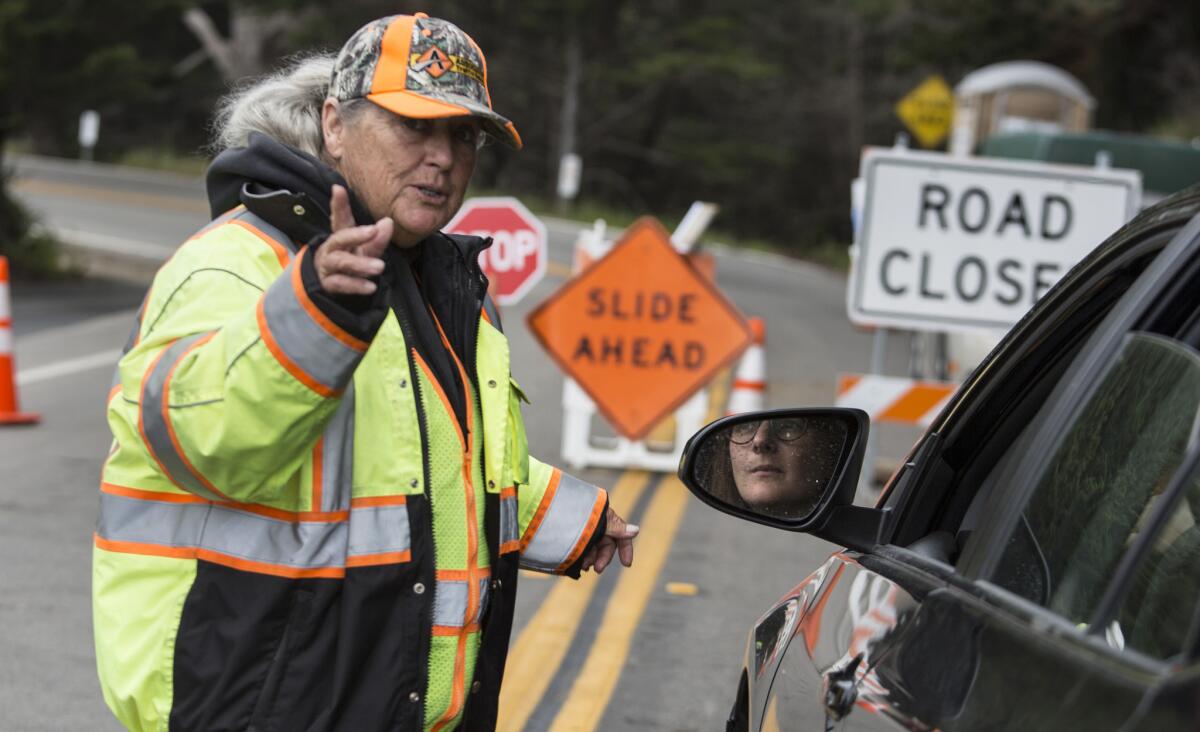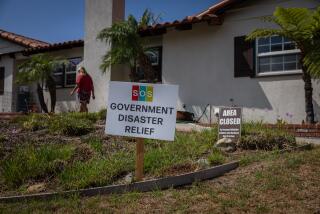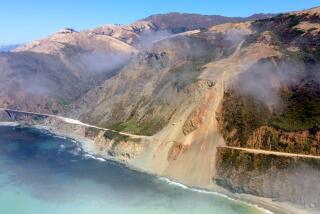Massive Big Sur landslide added 13 acres to Central California coast

A massive new landslide along California’s iconic coastal Highway 1 has buried the road under a 40-foot layer of rock and dirt, the latest hit in a winter of crippling slides and flooding.
Reporting from Big Sur, Calif. — A massive landslide that engulfed Central California’s Highway 1 has added 13 acres to the coastline.
Based on new aerial photographs, the May 20 slide in Big Sur created a bulge of land the size of 10 football fields, the East Bay Times reported Wednesday.
After a series of winter storms, more than 1 million tons of rock and earth slipped down a saturated slope in the Mud Creek area.
A quarter-mile of Highway 1 was covered by as much as 80 feet of stone and soil at its deepest point, Jonathan Warrick said. He is a U.S. Geological Survey research geologist who is leading a project to photograph the coast.
Photos taken by a plane a week after the slide were translated by computer into three-dimensional images. They showed the soil swept down into the Pacific Ocean, creating a new apron on land along a coastline usually beset with erosion.
“To witness the change of the coast in a constructional way — it’s such a unique event,” said landslide expert Kevin Schmidt, a USGS scientist who was not involved in the project.
“Typically, we are losing the battle to wave action,” he said. “It has been a number of decades since something this large increased our land mass.”

Caltrans contractor Arleen Guzzie directs a motorist to a detour around the road closure on Highway 1 in Big Sur.
The California Department of Transportation has estimated it could take millions of dollars and more than a year to repair the highway.
Caltrans won’t get rid of the land that fell into the Pacific but it won’t last, said Gary Griggs, professor of earth sciences and director of the Institute of Marine Sciences at UC Santa Cruz.
“It’s probably relatively short-lived,” he said. “It might take a couple years or a decade, but it’ll erode.”
ALSO
Diver dies while searching for abalone off Mendocino County coast
Accuser in Oakland police sex abuse scandal settles claim for nearly $1 million
Single-payer healthcare is popular with Californians — unless it raises their taxes
More to Read
Sign up for Essential California
The most important California stories and recommendations in your inbox every morning.
You may occasionally receive promotional content from the Los Angeles Times.










